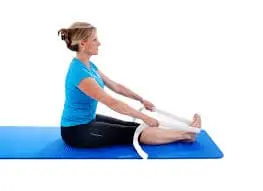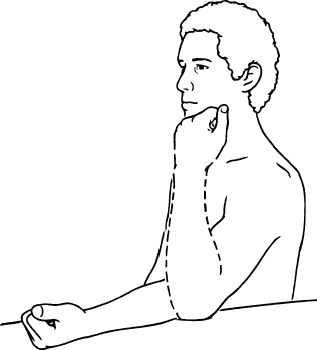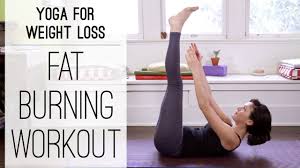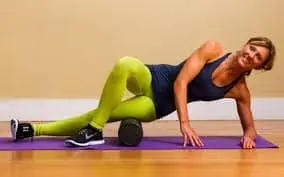16 Best Exercises for Subtalar Osteoarthritis
Exercises for Subtalar Osteoarthritis, together with pain medication and physical therapy treatment, are vital parts of your total treatment plan. exercises improve flexibility and mobility in the foot and ankle, strengthen the muscles supporting the ankle, and lessen stiffness and irritation.
Introduction:
Standing and walking, especially on uneven surfaces, may worsen the pain caused by subtalar arthritis in the hindfoot. Stiffness during side-to-side foot movement is most likely related to this. The most prevalent causes of subtalar arthritis are fractures of the calcaneal or misalignment of the mended bone, which often follow a history of trauma.
Osteoarthritis causes cartilage degradation, which can cause pain, swelling, and rarely, the rubbing of bones against one another during movement. Not only does osteoarthritis destroy cartilage, but it can also harm bones, muscles, ligaments, tendons, and other tissues.
If you have osteoarthritis, you must continue to be active. You know that exercise will improve your condition because it will strengthen your tendons and muscles and support your cartilage, but you are afraid it will make your symptoms worse.
After surgery or an injury, an exercise training program can help you return to your usual activities and lead a healthier, more active lifestyle. Resuming your sports and other interests will also be made easier with the help of a well-planned training program. By strengthening the muscles that support your foot, ankle, and lower leg, you can potentially maintain the health of your ankle joint.
Maintaining the strength of these muscles can help avoid further injury and relax stiffness in the foot and ankle. Your muscles will remain long and flexible when you engage in relaxing activities if you stretch gently after strength training.
The advantageous:
The following are some benefits of regular physical activity sessions;
- Relaxing muscles
- Become more flexible.
- It helps to strengthen the weak muscles.
- Release no matter the tension or tightness you may have.
- Improve your movement.
- Minimize Ankle pain
Exercises for Subtalar Osteoarthritis:
Among the best exercises for subtalar osteoarthritis are listed below;
Ankle circle
- Use a rolled towel under your ankle.
- You should rotate your ankle ten slow times in both clockwise and counterclockwise directions.
- Make sure you only move your ankle and foot, not your whole leg.
- Try circling the letters with your big toe to mix up the stretch.
- Then return to your neutral position.
- Then relax.
- Repeat this exercise 5 to 10 times.
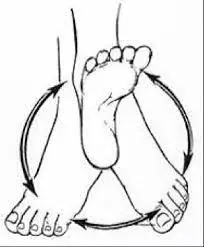
Standing heel raise
- Place your feet shoulder-width apart when standing.
- In case you need help, grab a chair or a wall close by.
- Raise your heels off the ground and maintain your weight on the heel of your feet.
- Hold this position for a few seconds.
- Reduce your heels to the ground gradually.
- Then return to your neutral position.
- Then relax.
- Repeat this exercise 5 to 10 times.
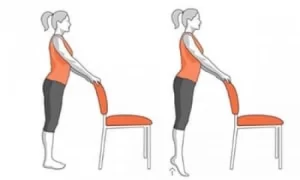
Ankle pump
- Take a seat on the ground comfortably to begin.
- Extend your toes away from your ankle.
- Hold this position for a few seconds.
- Bring your toes up to your ankle.
- Hold this position for a few seconds.
- Then return to your neutral position.
- Then relax.
- Repeat this exercise 5 to 10 times.
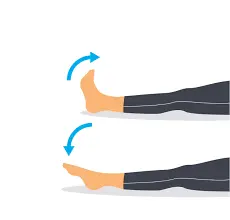
Toe raise
- Place your feet shoulder-width apart and stand up straight.
- Get your toes and the front of your feet off the floor.
- The only body parts that should be in contact with the ground are your heels.
- Hold this position for a few seconds.
- Bring your toes down to the ground.
- Then return to your neutral position.
- Then relax.
- Repeat this exercise 5 to 10 times.
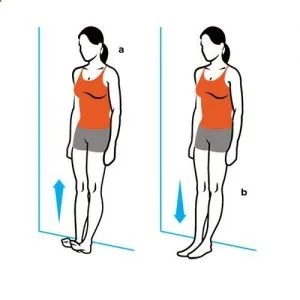
Towel curl
- Place a little towel on the ground in front of you as you sit.
- Keep your feet neutrally contacting the ground.
- Grab the towel by its center and curl up with it using your toes.
- Then return to your neutral position.
- Then relax.
- Repeat this exercise 5 to 10 times.

Resisted Ankle Dorsiflexion
- Begin by sitting down on the ground.
- Set up a loop with a resistance band and fasten it with a door that is closed or a heavy, sturdy object.
- As an alternative, you may ask someone to support a resistance band.
- The affected ankle’s top of the foot needs to be looped up.
- Bring your toes up towards your ankle to flex it slightly while keeping your leg and knee straight.
- Hold this position for a few seconds.
- Then return to your neutral position.
- Then relax.
- Repeat this exercise 5 to 10 times.
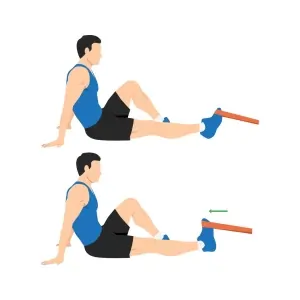
Towel stretch
- Spread your feet wide in front of you while seated on the ground.
- Wrap up the heel of the affected foot with the towel, holding its ends in your hands.
- Hold the towel in front of you while maintaining a straight leg.
- Hold this position for a few seconds.
- Then return to your neutral position.
- Then relax.
- Repeat this exercise 5 to 10 times.
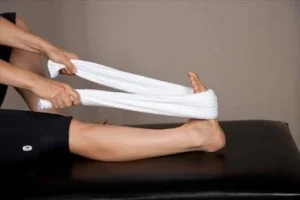
Wobble cushion exercise
- Stand near a chair, wall, or counter for stability and safety.
- On your chosen surface, place the leg you need to utilize for balance.
- Once your weight has been fully moved into the leg opposite you, raise it off the ground.
- Keep your leg solid and your abdominal core strong as you regain your balance.
- Hold this position for a few seconds.
- Then return to your neutral position.
- Then relax.
- Repeat this exercise 5 to 10 times.
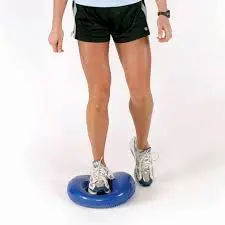
Standing calf stretch
- Take a posture facing a wall to begin.
- Step one leg straight out in front of you and one leg behind you.
- Keep the heel of your other foot planted on the floor.
- After that, lean against the wall.
- As soon as the back of your left calf muscles starts to pull.
- Hold this position for a few seconds.
- Then return to your neutral position.
- Then relax.
- Repeat this exercise 5 to 10 times.
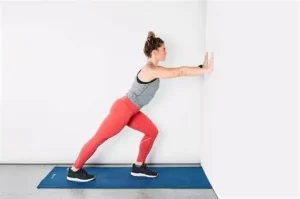
Toe Splaying
- Sit in a chair with your back upright and your feet comfortably rested on the floor.
- Spread your toes as widely apart as you can without hurting.
- Hold this position for a few seconds.
- Then return to your neutral position.
- Then relax.
- Repeat this exercise 5 to 10 times.
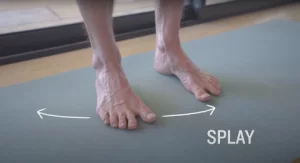
Golf ball roll
- Use a seat on the ground with a chair to start.
- A golf ball needs to be placed on the ground close to the feet.
- Place one foot on the ball and exert as much pressure as feels comfortable to move it around.
- The ball must be used to massage the foot’s bottom.
- Continue moving the ball in this manner over the next two to three minutes.
- Then return to your neutral position.
- Then relax.
- Repeat this exercise 5 to 10 times.
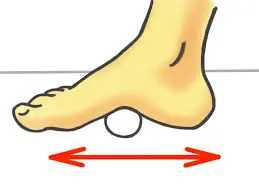
Single-foot heel raise
- If necessary, place your hands on the wall while standing straight.
- Make sure your toes are pointed forward and your feet are hip-distance apart.
- Lift your left leg off the ground and shift your weight to your right leg.
- Shift your weight to the heel of your right foot slowly.
- Raise your heel off the ground and apply pressure to the top of it.
- Hold this position for a few seconds.
- Then return to your neutral position.
- Then relax.
- Repeat this exercise 5 to 10 times.
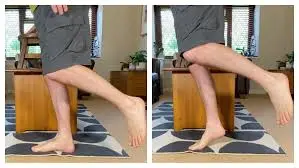
Marble pick up
- Sit up on a chair with both feet flat on the ground.
- Two bowls should be set on the ground in front of the feet, one should be empty and the other should contain at least ten to twenty marbles.
- Each marble should be placed using only one foot’s toes in the unfilled bowl.
- Then return to your neutral position.
- Then relax.
- Repeat this exercise 5 to 10 times.
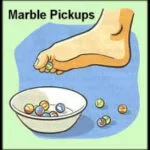
Big toe stretch
- To start, find a comfortable spot to sit on the bed or table.
- Grasp your big toe with the fingers of one hand and your heel with the other.
- Extend it slowly in the upward, downward, and side directions for a few seconds each.
- Then return to your neutral position.
- Then relax.
- Repeat this exercise 5 to 10 times.
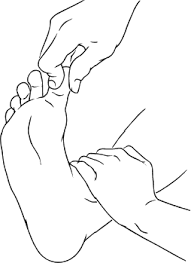
Heel Cord Stretch
- With your affected leg in front of you and your knee slightly bent, face a chair.
- The affected leg is directly behind you, with a flat heel and slightly twisted toes inward.
- Maintaining both heels flat on the floor, shift your hips forward and toward the chair.
- Hold this position for a few seconds.
- Then return to your neutral position.
- Then relax.
- Repeat this exercise 5 to 10 times.
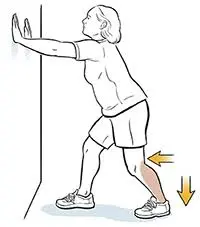
Toe Salutes
- Take a seat in a chair with your feet flat on the ground.
- Lift your big toe and hold the other four fingers firmly on the ground.
- Hold this pose for a few seconds.
- Then release.
- All four fingers should be raised simultaneously, with the big toe remaining on the floor.
- Then return to your neutral position.
- Then relax.
- Repeat this exercise 5 to 10 times.
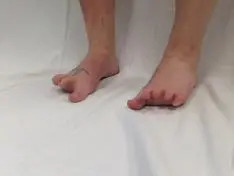
When exercising, what safety precautions are required?
- If you feel any kind of pain when exercising, stop right away.
- Before doing exercise, warm up and stretch.
- You should not perform any jerky or trick movements when exercising.
- Avoid doing strenuous activity.
- Stretches before exercises pauses in between activities, and the right amount of repetitions for each exercise should all be done in order with the protocol.
- It is ideal to exercise in loose, casual attire that encourages relaxation and free movement. Don’t dress in fashionable or tight outfits.
- Take a break in between exercise sets.
- Stretching the stiff muscles in your joint could be difficult, but it’s natural and even necessary. Stretching or exercise should never generate stabbing or painful sensations as this is negative and worsens the disease.
When do you quit exercising?
- Fever
- Headache
- A feeling of burning in the muscles
- You’re not feeling well.
- Whether numbness or pain is felt at all.
Which exercises or physical activities are best avoided by someone who has subtalar osteoarthritis?
- It might be necessary to refrain from engaging in activities that overstress the joints.
- Running on uncertain ground.
- Sports that cause trauma.
- Moving heavy objects.
- Wearing high heels.
- Avoid going on a jog.
- Avoid jumping.
- Stay away from repetitive stretches and exercises that put more strain on joints.
Summary:
The articulation of the talus and calcaneum forms the subtalar joint, which is a joint in the foot. The cartilage around the ankle joint decreases due to arthritis in the foot’s subtalar joint. Joint inflammation resulting from subtalar arthritis may be caused by an injury, an infection, or other reasons. Subtalar arthritis patients report pain below the ankles, on one or both sides of the foot.
Physical therapists typically recommend a stretching and strengthening program to help restore flexibility and increase strength after the inflammation has subsided. By doing this, the injured joint will be under less stress. Stretching the tissues surrounding the joint with more forceful ranges of motion can help improve ankle mobility once the pain subsides.
FAQ:
How much time does it take for the subtalar joint to heal?
When the joint is stronger, you might be able to start placing weight on your foot. You may require the help of a physical therapist to learn how to walk without falling over. Take at least 10 to 12 weeks off from your regular activities before returning to them.
Does subtalar osteoarthritis heal with exercise?
Exercise is a common way to lessen pain, remove suffering, and avoid damage. Exercising with a stretching motion can help strengthen the muscles which help support the body. Exercise on a regular basis may help to lessen the amount of persistent pain.
What are the symptoms of subtalar osteoarthritis?
The subtalar joint, the joint in the backfoot below the ankle joint, has been affected by a type of arthritis known as subtalar arthritis. The disease is characterized by painful hindfoot pain that gets worse when walking and standing, especially on uneven surfaces.
Can osteoarthritis be completely recovered from?
In some cases, osteoarthritis even becomes better with time, despite being a chronic ailment for which there is no known solution. To lessen the symptoms, there are also numerous therapy options visible. Moderate symptoms can occasionally be managed with simple techniques like consistent exercise.
Can subtalar arthritis heal on its own?
Difficulties with the subtalar joint can lead to issues with gait and mobility, particularly when walking on uneven surfaces. The subtalar joint could suffer permanent damage if therapy is not received. Simple procedures are typically the first choice for treating subtalar difficult joints.
What maintains the subtalar joint stable?
The talus and calcaneus have equal anterior, middle, and posterior facets that make up the subtalar joint. Numerous medial and lateral ligaments support and stabilize it. It is possible to evert or invert the hindfoot in the major line of motion.
Is osteoarthritis alleviated by walking?
Due to its low-impact nature, ability to maintain joint flexibility, improve bone health, and lower risk of osteoporosis, walking is frequently suggested for individuals with arthritis.
In what way is a subtalar joint supported?
Use of an ankle brace, such as an ankle lacer, or even taping the ankle and hindfoot can be helpful because it helps to limit motion via an arthritic subtalar joint.
References:
- December 13, 2023a, Bariya, D. The Top 24 Subtalar Osteoarthritis Exercises – Mobile Physiotherapy. Clinic for Mobile Physiotherapy. The top 24 exercises for subtalar osteoarthritis can be found at https://mobilephysiotherapyclinic.in.
- March 1, 2024; Pt, B. S. Activities to Manage Your Ankle Arthritis. Verywell Medical Center. Exercises for Ankle Arthritis at https://www.verywellhealth.com/5114508
- Physiotherapy, Treatment, Causes, and More for Subtalar Arthritis. (No date). Subtalar arthritis causes, treatments, physiotherapy, and more can be found at https://www.fixhealth.com/blogs/
- Image 6, L. Putra, n.d. Stretching using a resistance band is a man’s exercise routine. Achilles exercise. Vecteezy.com/vector-art/22915229-man-performing-dorsiflexion-and-resistance-band-workout-stretch-ankle-exercise
- Image 8, Physique Fitness Stores: Concorde Balance Disc Wobble Cushion (2024, July 31). Family-owned Physique Fitness Stores in Edmonton Held and Run Since 1962. The Concorde Balance Disc Wobble Cushion is available at Physique Fitness.
- Image 12, MSK Physiotherapy (2023, May 27). https://www.physiomsk.com/search?max-results=1&updated-max=2023-05-27T14:03:00-07:00

